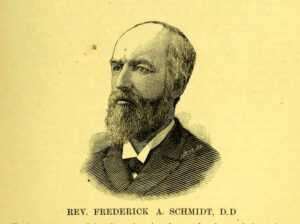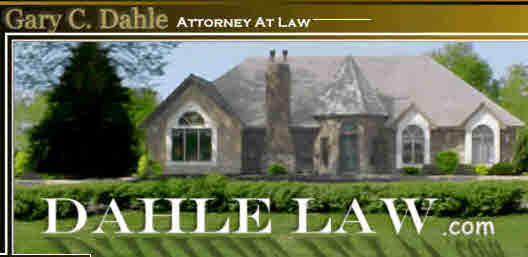The United Norwegian Lutheran Church of America
a/k/a The United Church
In 1890, three separate Norwegian societies of Church Reformers in the Midwest—including the Conference, the Augustana Synod, and the Anti-Missourian Brotherhood—merged to create the United Norwegian Lutheran Church of America (the “United Church”).
The Haugeans declined to join in the merger.[1]
Prior to the merger, a small faction of the Conference—which included C. L. Clausen (the “St. Ansgar Party”)— had always been opposed to Sven Oftedal and Georg Sverdrup at Augsburg Seminary.[2]
In addition, both the Augustana Synod—which had different priorities than the Conference—and the Anti-Missourian Brotherhood, opposed the ecclesiastical and educational principles in place at Augsburg Seminary.[3]
The Minneapolis Tribune—perhaps mistakenly—consolidated the opponents of Sven Oftedal and Georg Sverdrup into one opposition party led by two professors associated with the Anti-Missourian Brotherhood:
“There has always been two factions in this church society. The majority faction is led by F. A. Schmidt and Professor Mohn, the other side by professors Oftedal and Sverdrup.”[4]

F. A. Schmidt and Professor Mohn had no affiliation with the St. Ansgar Party, but were strong advocates for the St. Olaf School—later known as St. Olaf College.
No sooner had the United Church been formed than it became apparent to the supporters of Augsburg Seminary that the hostility against that school had not disappeared, and that its opponents might take control of the United Church, and thereby acquire control of Augsburg Seminary.[5]
The failure of the Haugeans to join the United Church in 1890 had left the supporters of Sven Oftedal and Georg Sverdrup in the United Church without the support it had expected from that society.
By 1893, the United Church had not only divided into two separate factions—but two divinity schools;
- one faction supporting Sven Oftedal and Georg Sverdrup in their operation of a divinity school at Augsburg Seminary, and
- one faction operating the United Seminary just blocks away from Augsburg Seminary, but claiming to be the rightful owners of the Augsburg Seminary campus.[6]
Rev. M. F. Gjertsen, the pastor of Trinity Lutheran Church in Minneapolis—and a supporter of Augsburg Seminary—offered his opinion of the conflict:
Very soon after the formation of the United Church in 1890, various attacks upon Augsburg Seminary and its management appeared in the papers, and at the annual meeting in the year 1891 a motion was made to remove the Preparatory Department to Northfield, leaving only the Theological Department in Minneapolis.
It now became evident that there was an understanding among those who were formerly of that faction in the Conference opposed to Augsburg Seminary and of the Anti-Missourian Brotherhood and the Augustana Synod, by which they would endeavor to obtain such control of Augsburg Seminary as would enable them to entirely change the original policy and character of the school and the management thereof.[7]
Rev. Ole Paulson, the former pastor of Trinity Lutheran Church in Minneapolis, and a supporter of Augsburg Seminary, gave his opinion of the conflict:
After the formation of the United Church, the trustees of Augsburg Seminary and its incorporators . . . discovered that it was the evident intention of the United Church to abolish the primary or college departments of Augsburg Seminary, contrary to and in violation of its articles of incorporation, and the solemn pledges given to the donors of its funds; that it was the purpose also of the dominant faction in said United Church to make St. Olaf College at Northfield, which had theretofore been considered an Anti-Missourian school and was not mentioned in the Articles of Union, the college of the United Church and to use the common funds for its support.[8]
The faction supporting Sven Oftedal, Georg Sverdrup, and Augsburg Seminary referred to themselves as the Friends of Augsburg.[9]
Many of the members of the United Church opposing Sven Oftedal and Georg Sverdrup were supporters of St. Olaf’s School—later known as St. Olaf College—which constituted the majority of the membership in the United Church, and could be fairly referred to as the St. Olaf Party.
The members of the St. Olaf Party, together with the members of the St. Ansgar Party, claimed that Augsburg Seminary had a contractual duty to convey all of its property to the United Church pursuant to the terms of the merger agreement adopted in 1890.[10]
However, a majority of the Board of Trustees of Augsburg Seminary—elected by the members of the Augsburg Seminary corporation, or their duly elected associates (the “Oftedal Trustees”), claimed that any such transfer of property was not authorized under Minnesota law, and sought to negotiate new merger provisions.[11]
Notes
[1] Minneapolis Tribune, June 4, 1893, page 5. Nelson and Fevold, Lutheran Church Among Norwegian-Americans, 2:25-26. Aff. M. F. Gjertsen March 2, 1897, ¶ 11, page 144.
[2] Augsburg Seminary and the Lutheran Free Church, 1928, Affidavit of Sven Oftedal, Paragraph 41. Aff. M. F. Gjertsen March 2, 1897, ¶ 12, page 144. Aff. N. G. Nilson March 1, 1897, ¶ 2, page 148. In the District Court of the State of Minnesota in and for the Fourth Judicial District and County of Hennepin, In the Matter of the Application of Nils C. Brun, et al, for leave to file an Information in the nature of Quo Warranto against Sven Oftedal, et al. (Minneapolis, 1897).
[3] Augsburg Seminary and the Lutheran Free Church, 1928, Affidavit of Sven Oftedal, Paragraph 41.
[4] Minneapolis Tribune, June 21, 1892, page 7.
[5] Augsburg Seminary and the Lutheran Free Church, 1928, Affidavit of Sven Oftedal, Paragraph 41. Aff. M. F. Gjertsen March 2, 1897, ¶ 16, page 146..
[6] Helland, Georg Sverdrup, 145-146, 159. Minneapolis Tribune, June 21, 1892, page 7. Minnesota Supreme Court Records and Briefs, 72 Minn. 590, page 60, April 1898, Brief for Appellant – Appellant’s Statement of Facts. Chrislock, From Fjord to Freeway, page 75.
[7] Aff. M. F. Gjertsen March 2, 1897, ¶ 16, page 146.
[8] Aff. Ole Paulson, March 2, 1897, ¶ 30, page 71.
[9] Nelson and Fevold, Lutheran Church Among Norwegian-Americans, 2:56.
[10] Minnesota Supreme Court Records and Briefs, 72 Minn. 590, page 66, April 1898; Brief for Appellant – Appellant’s Statement of Facts.
[11] Ibid, at 44. Helland, Georg Sverdrup, 147.
Copyright to the text 2019, Gary C. Dahle. All rights reserved.
